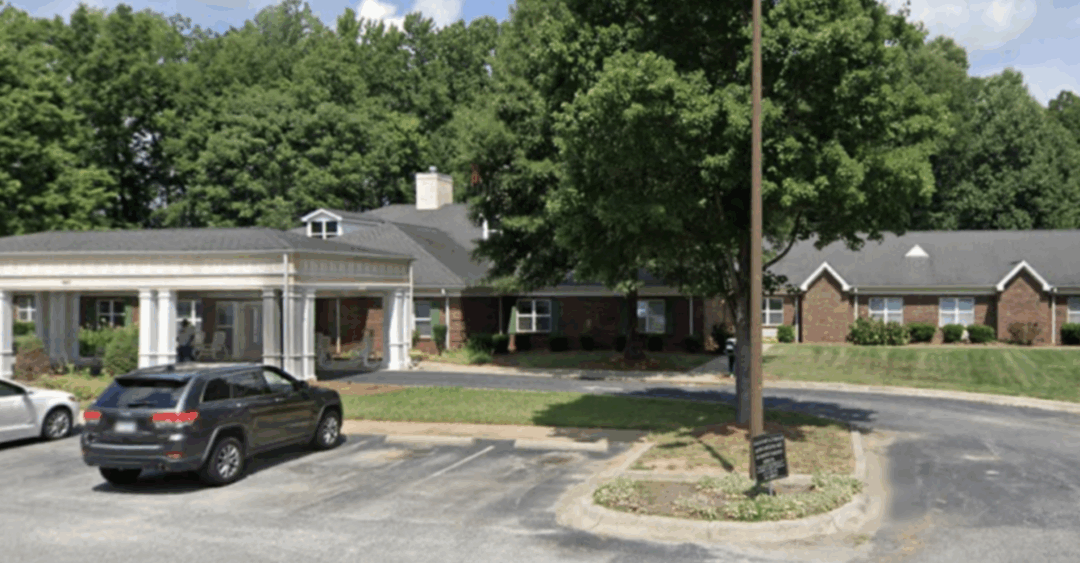Guilford County’s plan to renovate the Lee’s Chapel Residential Treatment Center to help recovering addicts just got moldy and therefore more expensive.
At the upcoming Thursday, Aug. 7 meeting, the Guilford County Board of Commissioners is expected to approve a $632,284 increase to the construction contract for the project. That unexpected price hike is largely due to mold discovered in May during demolition and interior work on the facility, which is being upfitted to meet state health regulations for residential treatment services.
The Lee’s Chapel project has been in the works for more than a year as part of a broader effort to expand local mental health and substance abuse treatment options.
In the summer of 2023, the Board of Commissioners approved the purchase of the former nursing home at 1411 Lee’s Chapel Road in Greensboro in order to use it as a “Residential Recovery Center” for county residents with drug problems.
The Board of Commissioners later selected Blum Construction to lead the renovation project, and in February of this year they approved funding the full construction phase.
The building must meet the strict licensing standards of the North Carolina Department of Health Service Regulations before it can open to residents.
The remediation effort has already been completed, but not before the county had to halt construction for more than two weeks while environmental testing confirmed the extent of the contamination – and a specialized crew removed and replaced drywall, insulation, woodwork and all affected ductwork.
According to county agenda documents released ahead of the meeting, the mold was present in multiple resident rooms and inside the building’s HVAC system.
Work stopped on June 10 and didn’t resume until June 26.
Blum Construction, which was awarded the design-build contract earlier this year, began taking new bids for the restoration materials while crews completed the remediation. The resulting costs are now being wrapped into a formal change order and being added to the Guaranteed Maximum Price of the existing contract.
If approved, the total maximin will increase from $4.57 million to just over $5.2 million.
While mold remediation accounts for the lion’s share of the added cost – about $436,813 – there are other additions bundled into the change order as well.
Those include $131,166 for new requirements imposed by the county’s Technical Review Committee, a $30,000 cost for switching to a different generator supplier due to delivery issues and nearly $65,000 in contractually permitted markups.
There’s at least one small bright spot in the findings: Guilford County won’t need to install a new fire water line after verifying that the existing line is larger than originally believed. That discovery shaves $106,523 off the total cost of the change order.
Even with the partial offset, the county will need to pull an additional $632,285 from its Capital Building Construction Fund and use it to cover the new costs. The budget ordinance amendment attached to the August 7 commissioners’ agenda would appropriate that money directly to the Lee’s Chapel renovation.
The delay caused by the mold removal will also push back the timeline for completion. The construction is now expected to wrap up on Dec. 31 of this year – three months later than originally scheduled.
The county isn’t alone in facing costly mold discoveries during renovation projects. Aging public facilities across the country have revealed moisture issues as construction crews start opening walls and inspecting ductwork – especially in buildings that sat vacant for long periods of time or were never originally designed for residential use.
The Guilford County Commissioners will vote Thursday night on whether to amend the existing contract and move the project forward under the revised budget. The agenda item is listed as a consent item, meaning it’s not currently scheduled for individual discussion unless a commissioner requests it be pulled for separate consideration.


Huge question…..with this case as well as the City’s project…….why aren’t the throughly inspected by the Inspections Departments or an independent inspector prior to purchase?
Cha ching cha ching! More tax dollars.